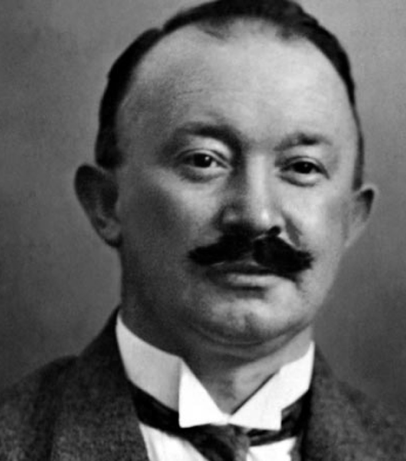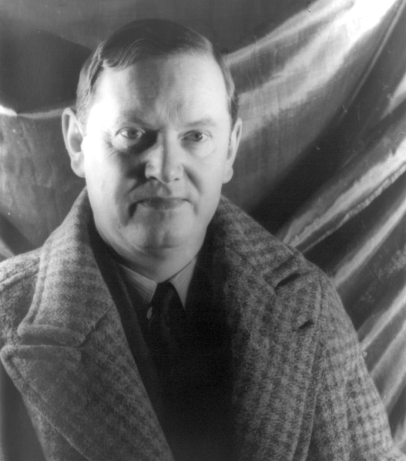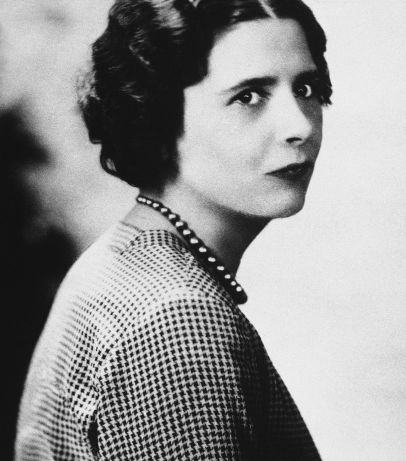Today we know the names of several dozen female Nazi criminals whose deeds could horrify the most diehard reader. We’ve picked the worst of the worst, although some of them managed to live to a ripe old age and die free.
Ilse Koch
‘The Witch of Buchenwald’, ‘Frau Lampshade’.
Wife of Concentration Camp Commandant, Chief Female Warden
Born 1906, Committed suicide in prison at the age of 61
The wife of Karl-Otto Koch, Commandant of the Nazi concentration camps Sachsenhausen, Buchenwald and Majdanek, took full advantage of her spouse’s station to dole out her own particular brand of sadism as a warden.
According to the camp inmates, Frau Koch would beat people she saw with a whip and sic a sheepdog on them as she strolled through the camp. She was accused of ordering the killing of prisoners with distinctive tattoos so that she could make lampshades, gloves, and book bindings from pieces of their skin. In 1941, Ilse Koch became the senior warden among the female guards.
In 1943, the Kochs were arrested by the SS. Two years later, her husband was sentenced to death for the murder of his personal physician and executed in Munich. The wife was acquitted and moved in with her parents. On 30 June 1945, Koch was captured by the Americans and sentenced to life imprisonment in 1947.
But several years later, General Lucius Clay, Commander in Chief of the United States Forces in Europe and military governor of the American Zone of Occupation in Germany, released her, finding insufficient proof for the charges that she ordered executions and made macabre souvenirs out of human flesh.
This verdict sparked protests, so Koch was arrested again in 1949. The hearing in the West German court lasted 7 weeks, during which 250 witnesses testified (including 50 for the defence). On 15 January 1951 she was sentenced to life imprisonment.
On 1 September 1967, Ilse Koch committed suicide. She hanged herself in her cell at Aichach women's prison. In 1975, she became more widely known as the inspiration for the Nazisploitation film Ilsa, She Wolf of the SS.
Irma Grese
‘The Blonde Devil’, ‘Hyena of Auschwitz’
Senior Female Warden at Auschwitz
Born 1923, Executed at the age of 22
Born into a large farm family, Irma was a Hitler Youth activist, worked as a nurse's assistant and dreamed of becoming a film star. But at the age of 19, despite her father's disapproval, she joined the SS auxiliary units.
She was sent to a specialised all-female concentration camp, Ravensbrück, and a year later transferred to a subdivision of Auschwitz-Birkenau. By the end of 1943 she was already the chief female warden - the second-highest rank in Auschwitz after the camp’s commandant.
The survivors repeatedly spoke of Irma Grese's cruelty. She wore heavy boots and carried a whip in addition to her pistol. The abuse of prisoners became a game for the 20-year-old girl: she beat female prisoners to death, enjoyed seeing people shot at random, starved dogs to unleash on her victims, and personally selected hundreds to be sent to the gas chambers.
After the war, the Western press discussed Grese's sexual deviations and her relations with SS guards, the commandant of the Bergen-Belsen concentration camp Josef Kramer, and even with the ‘Angel of Death’ Dr. Josef Mengele.
In March 1945 she was transferred at her request to Bergen-Belsen camp, where she was captured by the British in April. She was tried at the Belsen trial, which took place from 17 September to 17 November 1945, and was sentenced to death.
On 13 December Irma Grese was hanged at Hamelin prison.
Hermine Braunsteiner
‘Stomping Mare’
Warden at Ravensbrück and Majdanek Camps
Born 1909, Died free at the age of 90
This tall, blue-eyed blonde was born to a Catholic family in Vienna; her father was a chauffeur and her mother was a laundrywoman. She aspired to be a nurse, but instead became a maid.
The Anschluss of Austria made her a citizen of the Third Reich. Hermine moved to Berlin, where she worked in an aircraft factory. But soon she wished to become a prison guard: they were paid four times as much as factory workers.
In October 1942, Braunsteiner began working at Majdanek. There her sadism manifested in all its glory. She would separate mothers from their children before they were sent to the gas chambers, and whipped several women to death. She trampled women with her boots and was nicknamed the “Stomping Mare” or the “Mare of Majdanek”. She was considered one of the cruellest jailors, and received the War Merit Cross, 2nd class, from her superiors.
In January 1944 Majdanek was evacuated, and Braunsteiner was transferred to Ravensbrück. There she would beat prisoners with a whip that she carried with her.
Before the Soviet army liberated the camp, Hermine Braunsteiner fled to Vienna. A court in Graz, Austria, sentenced her to three years in prison for her crimes in Ravensbrück (her deeds in Majdanek were not yet known).
After her release, she worked in hotels and restaurants, before meeting and marrying an American citizen, Russell Ryan, and moving to the US in 1959. In New York she was regarded as a fine housewife and a friendly woman.
In 1964, a young New York Times journalist, Joseph Lelyveld, after receiving information from “Nazi hunter” Simon Wiesenthal, went to the Ryans' home. Mrs Ryan opened the door for him after the second call and exclaimed: “My God, I knew this would happen. You did come.”
Hermine claimed she had only worked at Majdanek for a year, of which eight months she had been in hospital. “My wife, Sir, wouldn't hurt a fly,” Mr. Ryan said. “There is no more decent person on this Earth. She told me it was her duty that she had to do.”
After much litigation, American authorities extradited her to the Federal Republic of Germany in 1973. The third trial for the Majdanek guards began – 15 other men and women were charged alongside Braunsteiner. The trial lasted from 1975 to 1981, becoming the longest and most expensive in German history.
One witness testified that Hermine “grabbed children by the hair and threw them into the gas chambers”. Another described the steel-rimmed jackboots she used to beat the inmates. She was eventually found guilty of killing 80 people, abetting the murder of 102 children and contributing to the deaths of 1,000, and sentenced to life imprisonment.
While in prison, Braunsteiner suffered from diabetes, underwent a leg amputation and was released in 1996. She died in 1999 in Bochum.
Herta Oberheuser
Killer-doctor
Born 1911, Died free at the age of 67
A dermatologist and model member of the Nazi Party, Oberheuser started working at Ravensbrück in 1940, where she remained until the summer of 1943. Having experimented on animals, she was able to set up her own experiments on human beings.
There, she was able to investigate how the body functioned, or failed to function, in extreme conditions, including hypothermia and frostbite, and following serious wounds. The subjects were mutilated and then treated.
After Reinhard Heydrich, Reich Protector of the Protectorate of Bohemia and Moravia, died of wounds sustained in an assassination attempt, they began testing the effects of sulphanilamide on infected wounds at Ravensbrück. Pieces of wood, rusty nails, broken glass, mud and sawdust were forced into the wounds of hapless inmates, and then experimental drugs were then tested on them. Almost all the participants in the experiments died.
Oberheuser apparently enjoyed such work: she took over the tasks of colleagues who had shied away from experiments on human subjects. She was also responsible for selecting women for the experiments, assisting in the mutilation operations, and supervising the test subjects. She put patients in pain to death, presenting it as an act of mercy. But contemporaries said that Oberheuser perceived her patients as guinea pigs rather than human beings.
Herta Oberheuser was the only female defendant in the Nuremberg “Doctors' trial”. During the trial, she insisted that a woman could not commit such heinous crimes.
The Tribunal sentenced Oberheuser to 20 years in prison and later reduced her sentence to 10 years. She was released on parole in April 1952. Her former prisoners began to recognise her and she was unable to work in a hospital or as a private doctor because of public outrage.
She died in 1978 in Linz am Rhein.
Maria Mandl
‘The Beast’
Warden of Female Camps in Auschwitz
Born 1912, Executed at the age of 36
Born in Münzkirchen, Austria, Maria Mandl served in the women's SS auxiliary units from 1938. She worked in both Lichtenburg and Ravensbrück, where she was promoted to senior warden.
In 1942 Mandl was transferred to the Auschwitz-Birkenau concentration camp. There she became chief of the female camps, over which she had full authority with the rank of SS-Obersturmbannführer (Lieutenant-Colonel). It was Mandl who secured protection for Irma Grese.
Co-workers described her as “extremely intelligent and dedicated”, whereas Auschwitz prisoners called her “The Beast” among themselves. Mandl personally selected the prisoners for death and sent thousands of them to the gas chambers. Her mood was erratic: she might take a few prisoners under her wing but then send them to the gas chambers when she got bored with them.
She also loved classical music. She established a women's camp orchestra, which would welcome newly arrived prisoners at the gate. The survivors recall that the musicians were well treated and that she would come to the barracks and ask them to play a piece.
In 1944 she was promoted to head of the Mühldorf subcamp of Dachau concentration camp. She escaped to the mountains in May 1945, but was arrested by American troops in August.
In November and December 1947, a Polish trial against the executioners of Auschwitz sentenced her to death by hanging. The sentence was carried out on 24 January 1948 in Krakow prison.
Luise Danz
Warden at Ravensbrück, Majdanek, Auschwitz, Malchow
Born 1917, Died free at the age of 92
Luise Danz, born in Walldorf, worked in a bakery and at the post office. In January 1943 she was invited to become a warden in the female auxiliary units of the SS. Starting in Ravensbrück, she worked her way through Majdanek, Auschwitz, and Malchow.
Prisoners stated that Danz beat them and took away their winter clothes. At Malchow, where she was chief warden, she starved people – not giving them food for three days. On 2 April 1945 she murdered an underage girl. Historian Simone Erpel wrote of Danz that “torturing women gave her pleasure”.
Danz was captured and arrested on 1 June 1945 in Lützow. At a trial that lasted from 24 November to 22 December 1947 she was sentenced to life imprisonment, but was released for health reasons in 1956.
In 1996, the 79-year-old Danz was tried before a German court for the murder of a child in Malchow concentration camp. When doctors said she would not survive a second imprisonment, the charge was dropped.
She then lived for another 13 years before dying in 2009.
Jenny-Wanda Barkmann
‘Beautiful Spectre’
Warden at Camp Stutthof
Born 1922, Executed at the Age of 24
Hamburg-based photo model Jenny-Wanda Barkmann became a camp guard late in the war in January 1944. She became famous for beating women, some of whom were beaten to death, in the small women’s concentration camp, Stutthof near Gdansk in Poland.
Jenny personally selected women and children to be sent to the gas chambers. The 22-year-old was very brutal but also so beautiful that the prisoners nicknamed her the “Beautiful Spectre”. When the Soviet Red Army approached the camp, Barkmann fled. However, in May 1945 she was arrested in Gdansk at the railway station. She was allegedly flirting with the militia guards and was not particularly worried about life.
The court found Barkmann guilty. In her last plea she stated: “Life is indeed a pleasure, and pleasures are usually short”.
Jenny-Wanda Barkmann was hanged on 4 July 1946 on Biskupska Gorka Hill near Gdańsk. Her body was burned and her ashes publicly washed away in the restroom of the house where she was born.
By Daniil Sidorov
























